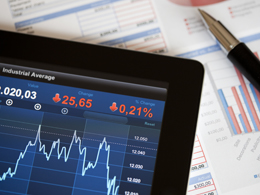 Following up on last week’s post about the value of premortems, I thought I’d do one on the stock market for the coming year. We’ll imagine that a decline has happened and try to figure out how and why, with the goal of strengthening our positioning today.
Following up on last week’s post about the value of premortems, I thought I’d do one on the stock market for the coming year. We’ll imagine that a decline has happened and try to figure out how and why, with the goal of strengthening our positioning today.
Note that I’m not actually predicting a decline in the stock market in 2015; this is simply a thought experiment. That said, let’s fast-forward to the end of 2015, assuming things haven’t gone so well.
Worst-case scenario: what I might be saying next year
I look back at the optimism we had at the start of 2015 with some mystification. The cover of Barron’s painted a rosy picture: “the economy expanding nicely, stocks climbing 10 percent, and interest rates inching up.” Most analysts were projecting continued profit growth, and the biggest problem on the horizon was how low oil prices were.
Now, of course, things look different. What happened in 2015 that led to such a difficult outcome? In many respects, we knew everything ahead of time, but it didn’t help. When the trends supporting the market reversed all at once, the impact was much greater than anyone expected.
Wage growth. After years of subpar wage growth, investors expected little progress in 2015. In hindsight, the drop in the unemployment rate to below 6 percent, along with the acceleration in wage growth at the end of 2014, could have told us that things were changing. Although rising wages helped corporate revenue growth, the increase in labor costs hit the bottom line harder, taking profit margins back down below the record levels enjoyed for much of the early 2010s.
Interest rates. Based on the strengthening U.S. economy and employment market, the Federal Reserve started hiking rates in June of 2015, finally putting paid to the notion that the Fed would always be looser for longer, and spooking investors who had grown used to the financial support of the past several years. In fact, the Fed’s rate hikes were well above what had been anticipated, as inflation, driven by wage growth and increases in apartment rental rates, grew above expectations. Higher rates made debt less affordable, slowing both the economy as a whole and (more important for the stock market) tanking the growth in corporate share buybacks.
Profit margins. Margins at U.S. companies had been rising for years on contained wage growth, low capital investment, low interest rates, and low tax bills. When the employment picture finally stabilized in 2015, the resumption of wage growth hit margins directly, at the same time that companies started investing in their businesses again and tax enforcement tightened. While the overall damage to margins wasn’t actually all that great, investors got the message and stopped expecting double-digit earnings growth from single-digit revenue growth. Making matters worse, the decline in margins combined with the rise in rates to tank corporate share buybacks, hitting earnings growth even harder.
Stock market valuations. The decline in expected earnings growth fed directly into a decrease in what investors were willing to pay for stocks. With market valuations at historically high levels, justified by low interest rates and inflation, the double whammy of decreasing expected earnings growth and higher rates knocked valuation levels down to merely average—again, not a large or unusual adjustment, but one unanticipated by investors, who pulled back hard at the change in expectations.
Margin debt. The addition of the margin debt bubble only made the adjustment worse. With debt used to finance stock market purchases at very high levels, any change in the psychology had the potential to disrupt the market. The rise in rates, combined with lower earnings expectations, caused investors to pull back, forcing levered investors to sell and driving values down further. This trend was slow to start, but as investors became less confident through the year and liquidated more and more, borrowers came under more pressure—and sold more, exacerbating the decline just as they had supported the rise.
Back to 2014
Looking at this potential scenario from the present day, none of the individual events seems impossible or even unlikely. I’ve written about each of them before, and the data is clear. We probably won’t see all of them come together in this way, but they could.
And that’s what a premortem is for—to look at a potential failure and determine what might lead up to it. Based on this rough outline, a very difficult 2015 isn’t improbable. Time to plan now.


 Print
Print


